This activity was done by Daniela De Luca, a restorer-potter who leads workshops at Primary Schools, Summer camps and leisure centers. These tiles were created at the Mezzocorona Primary School (Trento, Italy) , by children of Grade 5.
The tiles are made of Terracotta, a red-brown porous earthenware clay. To begin, cut 1,5-2 cm –thick slabs off the bag of clay. Put the slab between two pieces of wooden slats, which are the desired thickness of your tile. Press slightly the clay by hand and then roll it firmly with a wooden rolling pin.
After that, trim the slabs, cutting a square shape around 15×15 cm.
When the clay is leather-hard spread a layer of white slip with a soft paintbrush. When the slip is dry you can scratch or carve the layer exposing contrasting claybody beneath.
Daniela’s students had previously drawn some simple drawings as little landscapes, animals or flowers with pencils on paper, in order to have a clear sketch of what they would like to carve on the tile.
The tiles were fired in the kiln at around 980 C°.
Thanks to Daniela and her Children for sharing their amazing work!


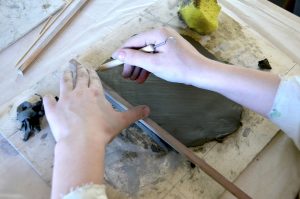
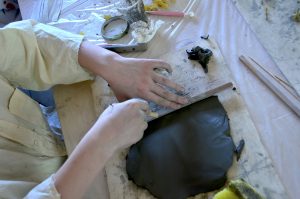
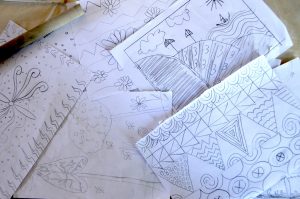




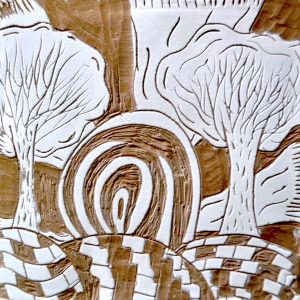
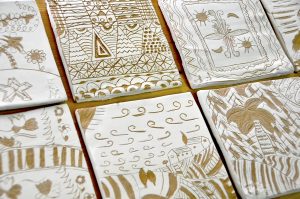
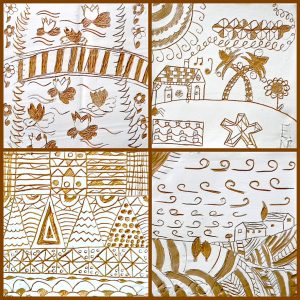
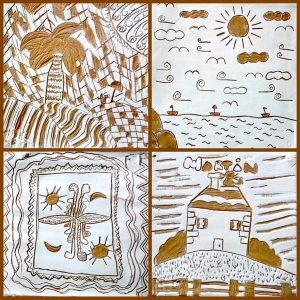
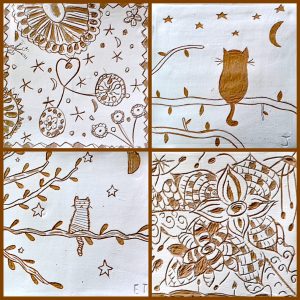
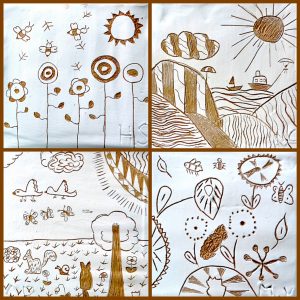
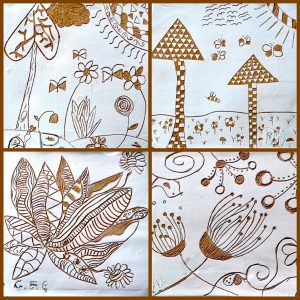
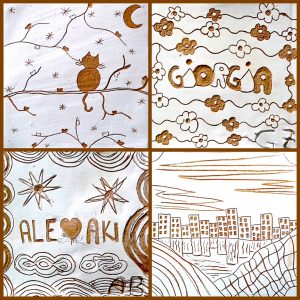
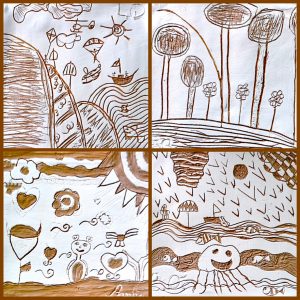

These are very cool. However, since I do not have a kiln in my classroom or at my disposal, it would not be possible to do it. I am wondering if it could be done with self drying terracotta clay?
I think it would be possible, the problem is to find a white material similar to the slip, you have to do some samples. I suggest you this drawing activity, the sgraffito is made on white acrylic paint overlapped on oil pastels…http://arteascuola.com/2013/01/the-ming-vases/
You could try doing a red and brown square background whit white acrylic paint 🙂
Hi Miriam. We have a kiln at our school, but I am wondering how long it takes for the tiles to be ‘leather dry’ before the slip can be applied? Can the project be completed in 1 day to the point of firing? Also…do you make the slip by soaking china clay in water? Thanks for your help. These look wonderful.
Hi Joy! The hardening of clay must be slow and gradual. The time it takes depend on the weather, or the environment where the tiles dry and on the thickness of the tile.
Furthermore in the “leather dry” phase, the clay is not completely dry, this step can be called “bone dry”. So, you need a day or more for clay to become leather dry, then after the white slip (it dries very fast) and sgraffito, you need some more time to dry completely the tiles (maybe another day). Then tiles will be ready for firing.
The slip can be white clay soaked in water: the best is to put dry fragments of white clay in water, and to decant it for some days. 🙂